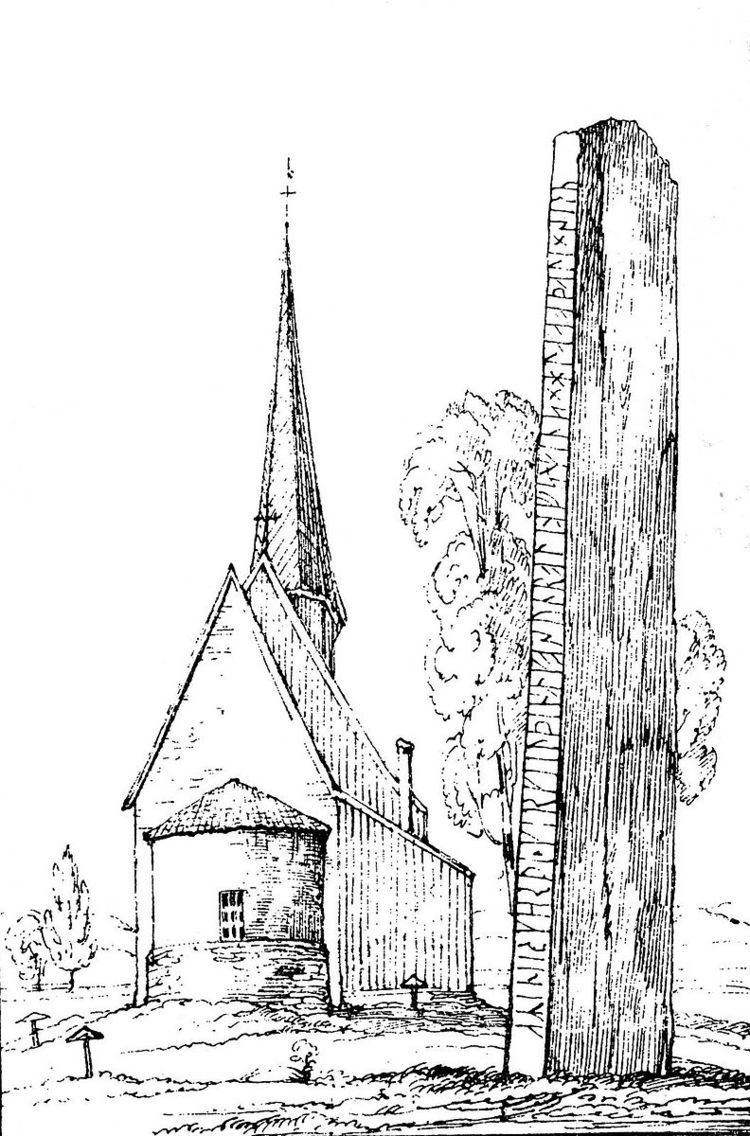 | ||
The Oddernes stone is a rune stone from Oddernes Church in Oddernes in Kristiansand, Norway. The stone was originally just east of the church, but in 1990 it was moved into the church porch.
Contents
The stone referred to at first in 1639, when Bishop Tomas Cortsen Wegner visited the place. He was commissioned by Ole Worm, who was preparing itself Monumenta Danica, and he gave a description of the stone with a drawing of the two inscriptions.
Both inscriptions are written with the younger runes and they are approx. dated to year 1030 and to 1040.
Inscription from 1030
The first inscription (N209) is carved on one flat side of the stone, and is almost indistinguishable. It can be read (Old Norse into Latin letters):
"....ur- (n)iriþs| |sun is| |st(a)in sa"
This is interpreted as "... Neriðs son er steinn sá". In modern English: "After (NN) Neriðs' son is this stone," or "In memory of Tore Neridsson is this stone."
The second inscription
The second inscription on the narrow side of the stone (N210) is much longer and is much more startling:
aʀintr × karþi × kirkiu × þesa × kosunr × olafs × hins × hala × a oþali × sinuWorm interpreted parts of this text, namely Olaf hins hala as "Olaf the saint" (St Olaf), and this is reproduced in Monument Danica. In 1805, Martin Friedrich Arendt was at Oddernes, and gave a complete reading of the text: Eyvind gerði kirkiu þessa, guðsonr Olafs hin helga, à oðali sinu; modern English: "Eivind made this church, godson of St. Olaf, on his heir". This interpretation is accepted by authorities such as Sophus Bugge and Magnus Olsen. But others have interpreted the word hala differently, and believe it may have a different meaning than holy or saint. This would override the impression that St. Olaf had actually been present here. Still, the interpretation of this inscription is debatable.
